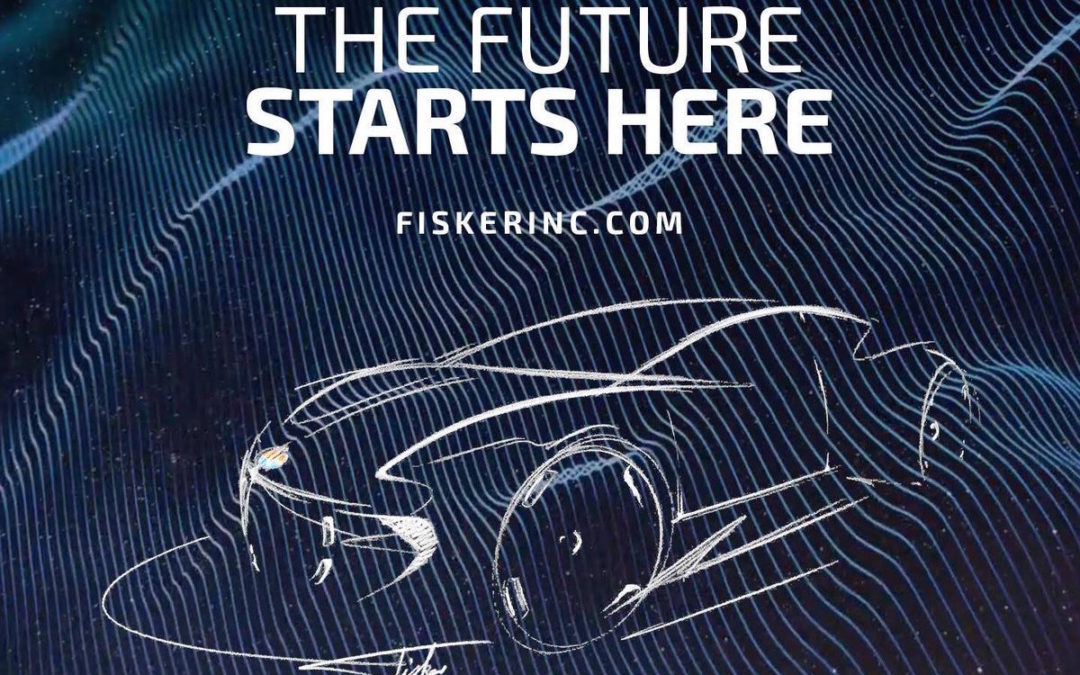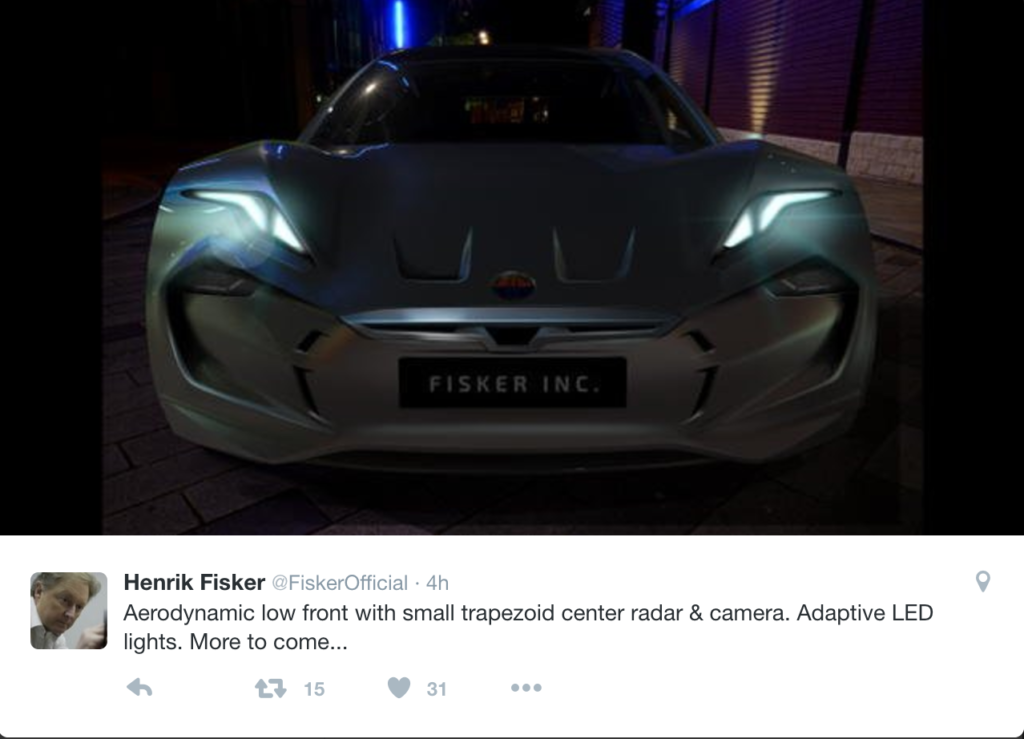Just days after Henrik Fisker announced the formation of a new automotive company, Fisker Inc., the Danish designer tweeted a teaser shot from the front of his new vehicle.
Complementing a shadowy picture of a butterfly-door sedan from last week, the image shows familiar Fisker styling mixed with new headlight designs. Immediately, the VLF Force 1 project comes to mind. Both cars share a hexagonal grille outline and C-shaped inlets. Unlike the Viper V10-powered Force 1, Fisker’s new sedan will be an all-electric model, meaning it does not need an airflow to an engine. Due to its squinty headlights, the front fascia appears to have a wide grin that is more friendly than fierce.
Beyond these styling teasers, the Fisker Inc. model will reportedly rival Tesla’s Model S, Porsche’s Mission-E, Karma Automotive’s Revero, and whatever Mercedes-Benz decides to name its all-electric sedan. The startup’s first vehicle is said to be luxurious and technologically advanced, with a set of trick folding doors that are more modest than Tesla’s Model X gull wings, but still cool.
Related: Fisker Interview: Force 1 Supercar
Fisker’s sedan will use a brand new battery pack developed in-house by Fisker Nanotech. The pack will use graphene for a longer range and lifespan. Fisker hopes to offer 400 miles of driving range in a car priced from $65,000. Soon after the company’s midsize sedan goes on sale, a smaller vehicle, aimed squarely at Tesla’s Model 3, will go on sale next year. The entry-level offering will use the same battery technology with a shorter range.
Fisker has bounced around the automotive industry for decades as designer for BMW and Aston Martin, before diving into his own electric-vehicle endeavors. Fisker Automotive was formed in 2007 on the shoulders of a plug-in hybrid sedan called the Karma. Over a billion dollars and only 2,000 sales later, FA was dead and Fisker moved on to projects with Galpin and Bob Lutz.
Fisker Inc. sounds ambitious, but buyers who prefer Fisker’s design flavor — and who want to get their hands on an affordable EV before Tesla gets its production schedule on track — could buoy the new operation.


